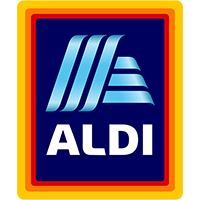Understand what Data Fabric is. This glossary explains the details and exposes some commonly asked questions.
What is data fabric, and how does it enable data integration across diverse environments?
Data fabric is an architectural framework designed to provide a comprehensive and integrated layer of data services across various environments, from on-premises to multiple clouds. It enables data integration across these diverse environments by leveraging advanced technologies like AI and machine learning for data management, orchestration, and integration. Data fabric automates data discovery, governance, and consumption, making it easier for organizations to access and analyze data stored in disparate systems and formats, thereby breaking down silos and fostering a unified data ecosystem.
How does data fabric support real-time data access and analytics?
Data fabric supports real-time data access and analytics through its dynamic and intelligent data pipeline capabilities. By utilizing event-driven architectures and streaming data services, a data fabric can process and analyze data as it is generated, providing insights and information in real-time. This immediacy is crucial for applications requiring up-to-the-minute data, such as fraud detection, dynamic pricing models, and real-time personalization in customer experiences.
What are the core components and technologies that constitute a data fabric?
The core components and technologies that constitute a data fabric include:
- Data Integration and Orchestration Tools: To automate the movement and transformation of data across systems.
- Data Catalogs and Metadata Management: For organizing data assets and managing metadata to enhance discoverability and governance.
- AI and Machine Learning: To automate data management tasks, improve data quality, and enable advanced analytics.
- APIs and Service Meshes: To facilitate access to data and services across the fabric.
- Data Storage and Processing: Including databases, data lakes, and data warehouses that store and process data within the fabric.
How does data fabric address data governance and security challenges?
Data fabric addresses data governance and security challenges by embedding governance and security protocols as foundational elements of the architecture. It employs comprehensive metadata management to enforce policies, manage data lineage, and ensure compliance. Data fabric architectures also incorporate advanced security measures such as encryption, access controls, and auditing capabilities to protect data across all environments. By centralizing governance and security within the fabric, organizations can maintain high standards of data quality, privacy, and regulatory compliance.
In what ways does data fabric enhance data discovery and accessibility?
Data fabric enhances data discovery and accessibility by providing a unified and searchable view of all data assets across the organization. Through the use of data catalogs and metadata management, users can easily find and understand the data they need. AI-driven automation within the fabric can also recommend relevant datasets and insights to users, further enhancing discovery. Additionally, by standardizing access through APIs and ensuring data is available in real-time, data fabric architectures make it easier for users to access the data they need when they need it, thereby supporting a wide range of analytical and operational use cases.
How can data fabric facilitate the management of both structured and unstructured data?
Data fabric can facilitate the management of both structured and unstructured data by providing a unified architecture that seamlessly integrates diverse data types and sources. It employs advanced data integration and orchestration tools to automate the ingestion, transformation, and delivery of data, regardless of its structure. By leveraging metadata management and data catalogs, data fabric ensures that both structured data (such as from databases) and unstructured data (like documents and multimedia) are easily discoverable, accessible, and usable across the organization. This holistic approach enables comprehensive data analysis and insight generation from all available data.
What role does artificial intelligence and machine learning play in data fabric solutions?
Artificial intelligence (AI) and machine learning (ML) play a pivotal role in data fabric solutions by automating complex data management tasks, enhancing data quality, and enabling predictive analytics. AI/ML algorithms can automate the discovery, classification, and tagging of data, making it easier to manage and access. They also help in identifying data relationships and patterns, facilitating more accurate and dynamic data integration and orchestration. Furthermore, AI/ML-driven insights support advanced analytics capabilities within the data fabric, enabling organizations to predict trends, optimize operations, and personalize customer experiences.
How does data fabric differ from data lakes and data warehouses?
Data fabric differs from data lakes and data warehouses in its approach and scope. Data lakes are repositories that store raw, unstructured data at scale, while data warehouses are structured databases optimized for query and analysis of processed data. In contrast, data fabric is an overarching architecture that integrates various data management and storage technologies, including data lakes and warehouses. It focuses on connecting, accessing, and analyzing data across these and other data sources in real-time, providing a more dynamic and flexible approach to data management that supports a broader range of use cases.
What are the key considerations for organizations looking to implement a data fabric architecture?
Organizations looking to implement a data fabric architecture should consider:
- Data Integration and Quality: Ensuring seamless integration of data from various sources while maintaining high data quality.
- Governance and Compliance: Establishing robust data Governance and compliance mechanisms to manage data across its lifecycle.
- Scalability and Performance: Designing the architecture to scale efficiently with the organization's data needs without compromising performance.
- Technology and Vendor Selection: Choosing the right technologies and partners that align with the organization's data strategy and technical capabilities.
- Cultural and Organizational Change: Preparing for the cultural and organizational changes required to adopt a data-centric approach.
How does data fabric support business agility and digital transformation initiatives?
Data fabric supports business agility and digital transformation initiatives by providing a flexible and efficient way to manage and utilize data across the organization. By enabling real-time access to integrated data from multiple sources, data fabric allows businesses to quickly adapt to market changes, make informed decisions, and innovate. It facilitates the development of new digital products and services by making data more accessible and actionable. Additionally, the automation and AI capabilities within data fabric can accelerate operational processes, reduce manual efforts, and enhance customer experiences, driving digital transformation and competitive advantage.










